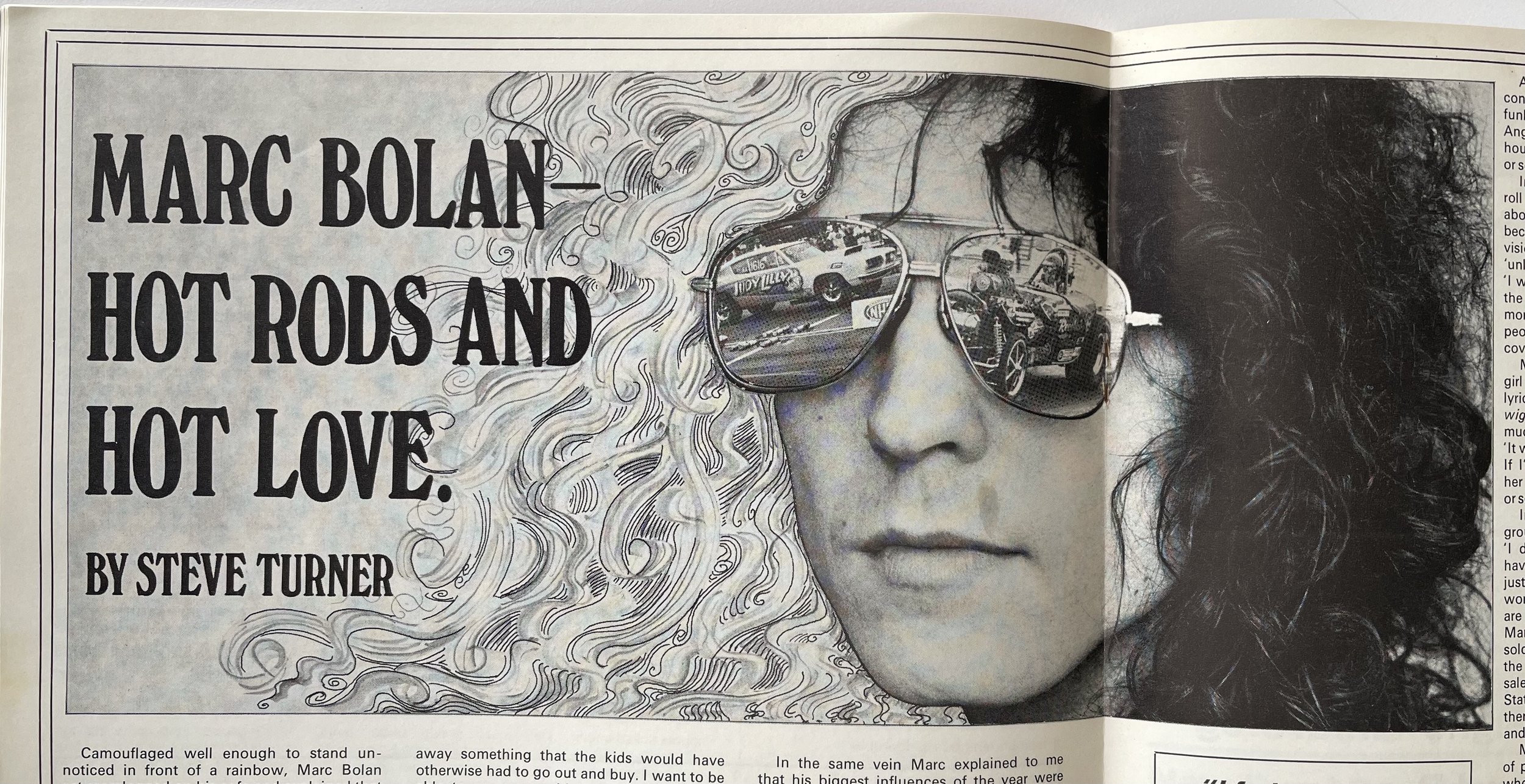Three Marc Bolan related things recently encountered and that I think are worth sharing:
First is from November 1971 Beat Instrumental mag with Bolan as the cover star.
Second is from Simon Reynolds’ Shock and Awe Blog (link here)
Third is an interview with Tony Visconti from the April 2022 edition of Record Collector
‘Marc Bolan – Hot Rods and Hot Love’ . . . A title primed for the time, not a hint of the mystical, instead shiny hard chromium heat and flash. Mirrored shades reflecting back trashy American automobiles customised to go go go . . . Steve Turner’s piece promised to get inside Bolan’s fixation on car imagery, but it hardly starts the quarter mile. I’d hoped for a little more on the car/sex conflation but pickings are meager. You’d do better to head off to YouTube and watch Kenneth Anger’s Kustom Kar Kommandos once more (link here) and switch ‘Dream Lover’ with ‘Hot Love’ . . . What you do get, however, is a splended kiss-off line: ‘I’ve been round the world 25 times faster than anyone else.’ Pure Bolan that. . .
The cover image of Bolan staring back at the camera is the counterpoint to the photographs Simon Reynolds looks at, each belong to that moment where Bolan thought of himself as occuppying the middleground between Led Zeppelin and Eddie Cochran . . .
When self-absorption mixed with cocaine and champagne at the Chateau. . . but before that you could go around the world with T. Rex 25 times faster than with anyone else . . .




























